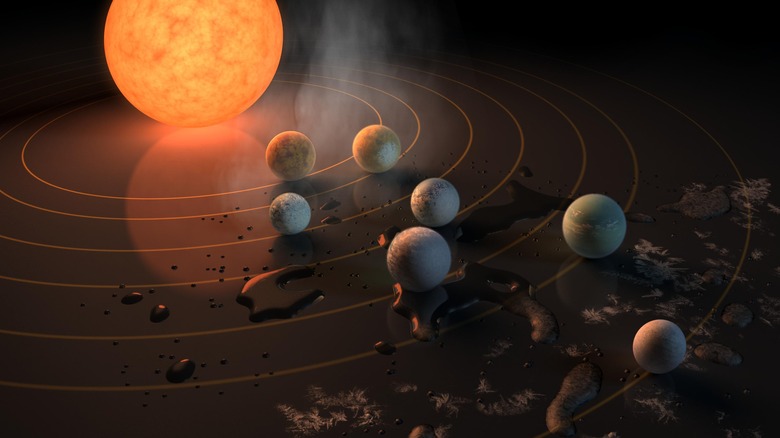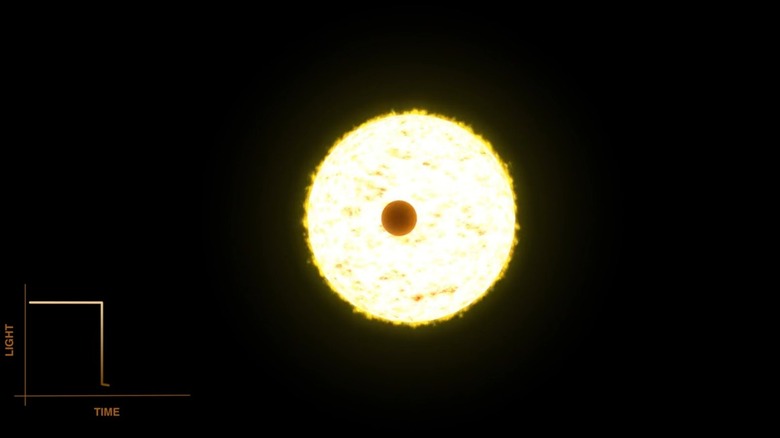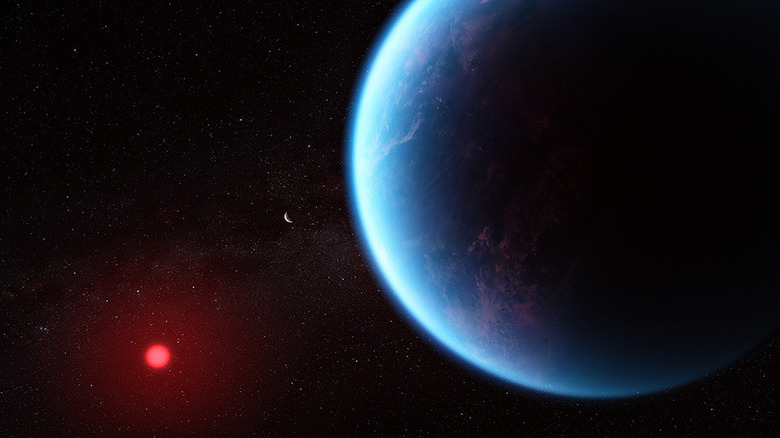NASA Is Planning To Discover Potentially Habitable Worlds: Here's How
Of all the jobs that telescopes do — learning about distant galaxies, taking pictures of beautiful nebulae, or learning about far-off stars — one of the most exciting for the public is looking for habitable worlds. It's not easy to find a world that could harbor life as the conditions have to be just right: not too hot or too cold, not too much radiation, made of rock rather than gas, having an atmosphere that is thick enough but doesn't create a crushing pressure, and so on.
It's also difficult to study planets outside of our solar system (called exoplanets) because they are so small relative to bigger, brighter objects like stars. That's even more of a problem when a dim planet is close to a bright star, because the light from the star blows out the small amount of reflected light given off by the planet. It's like trying to take a photo when there's a bright light in the background — the light blurs out the details of nearby objects.
There are plans for future observatories to study exoplanets, like the Habitable Worlds Observatory which NASA wants to launch in the 2040s which will have a special instrument called a coronagraph which blocks out the light from stars to study nearby planets. The Nancy Grace Roman Space Telescope, set for launch in 2027, will also have a coronagraph so it can study exoplanets.
But scientists aren't waiting around for these new telescopes to search for habitable planets. They are already working on finding these worlds using existing tools, like the James Webb Space Telescope which launched in 2021.
How telescopes search for exoplanets
With so many factors affecting whether life could survive on another planet, astronomers generally use a simplified approach. The most important factor for life as we know it is the presence of liquid water, so that is the key for current habitability hunts. Astronomers want to find exoplanets which are in the temperature range where they could have liquid water on their surface — between 0 and 100 degrees Celsius.
The way Webb begins looking for exoplanets is actually by looking at stars. As we said above, stars are much brighter than planets so they are easier to observe. If you look very closely at a star, you can see indications of when a planet passes in front of it. When a planet moves across the face of a star as seen from Earth — an event called a transit — that causes the brightness of the star to drop very slightly. It's a dip of just around 1% typically, but that is enough to be detectable.
If astronomers observe a star and see these dips in brightness occurring regularly, then can infer that a planet must be orbiting the star, and they can also see how often these transits happen, which tells them about the planet's orbit.
This is called the transit method, and it's one of the main ways that astronomers discover exoplanets using all kinds of large telescopes. But James Webb has an extra trick up its sleeve which allows it to not only observe transits, but also to learn about the atmosphere of the exoplanets.
How James Webb studies exoplanet atmospheres
When a transit occurs, there's a time at which the light coming from the star is filtered through the planet's atmosphere (if it has one). This is a tiny effect, but because Webb is so sensitive, it is able to use its instruments to take readings using a method called transmission spectroscopy. Basically, by looking at the starlight coming through the atmosphere, scientists can see what that atmosphere is made of.
This isn't easy though, as Webb scientists Knicole Colón and Christopher Stark explain: "The amount of starlight blocked by the thin atmosphere of a small rocky planet is tiny, typically much smaller than 0.02%. Simply detecting an atmosphere around these small worlds is very challenging."
There are exoplanets where Webb has been able to detect an atmosphere, but only a small number of these are rocky, potentially habitable worlds. Two of those are LHS 1140 b and TRAPPIST-1 e, and while the odds of the planets in the TRAPPIST-1 system being habitable are not looking good, LHS 1140 b is thought to potentially host water — making it a great candidate for habitability studies.
Another class of larger exoplanet called Hycean planets could be a good candidate for habitability too, like the recently studied K2-18 b. "Traditionally, the search for life on exoplanets has focused primarily on smaller rocky planets, but the larger Hycean worlds are significantly more conducive to atmospheric observations," said astronomer Nikku Madhusudhan who studied this world. In the meantime, Webb will continue searching for more indications of habitability, and will soon be joined by future telescopes like Grace Roman in the search as well.


